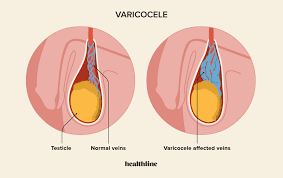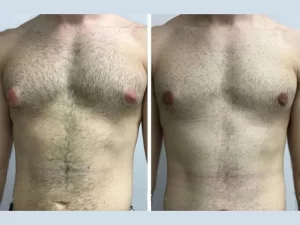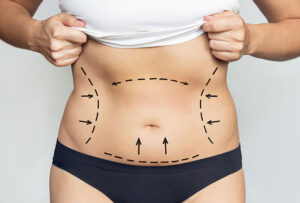Working out at the gym is often seen as a ticket to better health, improved confidence, and enhanced physical performance. But if you’ve ever heard whispers that heavy lifting might cause or worsen varicocele, you’re not alone. It’s a concern many fitness enthusiasts—especially men—have when balancing their workout routines with their reproductive and vascular health.
This article dives deep into the relationship between gym workouts and varicocele, helping you understand what science says, which exercises may be risky, and how to continue your fitness journey safely if you’re dealing with or trying to prevent this condition.
What is Varicocele?
Let’s start with the basics. A varicocele is a condition where the veins within the scrotum become enlarged or twisted, similar to varicose veins in the legs. These veins—known as the pampiniform plexus—are responsible for draining blood from the testicles. When they become dilated, it can lead to discomfort, a feeling of heaviness, visible swelling, and in some cases, fertility issues.
Varicoceles are quite common, affecting about 15% of adult males and up to 40% of men evaluated for infertility. The condition often develops during puberty and is more commonly found on the left side of the scrotum due to anatomical reasons.
Gym Workouts and Varicocele: Is There a Link?
The big question is whether lifting weights or doing strenuous workouts at the gym can cause varicocele—or at least make it worse.
1. Straining Increases Intra-Abdominal Pressure
One of the most recognized risk factors for varicocele is elevated pressure in the abdominal area. This pressure can interfere with the proper blood flow from the testicular veins back to the heart. When you engage in exercises like:
-
Heavy deadlifts
-
Squats with high weight
-
Leg presses
-
Intense core workouts
…you’re significantly increasing intra-abdominal pressure. Over time, or with poor technique, this pressure can weaken or damage the vein valves, leading to pooling of blood and vein dilation.
2. Poor Breathing Techniques While Lifting
If you’re someone who tends to hold your breath while lifting—known as the Valsalva maneuver—you might unknowingly be putting extra stress on your venous system. This technique spikes blood pressure and intra-abdominal pressure, potentially exacerbating or triggering varicocele.
3. Pre-existing Varicocele and Exercise
If you already have a mild varicocele, intense physical activity may aggravate symptoms. Some men report increased aching, swelling, or a dragging sensation in the scrotum after a tough leg day. This doesn’t necessarily mean you need to quit exercising—but you may need to adjust your routine.
Exercises to Be Cautious With
While staying fit is important, awareness of certain exercises can help you avoid unnecessary discomfort or complications. Here’s what to be mindful of:
❌ Heavy Weightlifting
Repeatedly lifting heavy weights, especially with improper form, places consistent stress on the lower abdomen. If you are into bodybuilding or powerlifting, consult with a specialist if you notice varicocele symptoms.
❌ High-Resistance Leg Workouts
Machines like the leg press or hack squat can put extra pressure on your pelvic region.
❌ Aggressive Core Training
While core strength is essential, overtraining with movements like weighted crunches, hanging leg raises, and barbell rollouts can intensify intra-abdominal pressure.
Safe Exercises for Men With Varicocele
The good news is that having varicocele doesn’t mean you have to give up the gym. Many exercises are safe and even beneficial. Here are a few:
✅ Cardio Workouts
Running, walking, swimming, and cycling (with proper seat adjustments) promote circulation without putting unnecessary stress on your pelvic veins.
✅ Bodyweight Exercises
Push-ups, pull-ups, planks, and lunges using just your body weight help maintain fitness without excessive intra-abdominal pressure.
✅ Yoga and Stretching
Certain yoga poses enhance blood flow, reduce pelvic congestion, and can even relieve varicocele symptoms. Try postures like Legs-Up-the-Wall (Viparita Karani), Cobra (Bhujangasana), or Reclining Bound Angle Pose (Supta Baddha Konasana).
✅ Resistance Training with Light Weights
If strength training is important to you, consider using lower weights with higher repetitions. Focus on breathing correctly and avoid straining.
Listen to Your Body: Signs You Shouldn’t Ignore
Pay attention to these symptoms, especially after a workout:
-
Dull, aching pain in the scrotum
-
Noticeable swelling or lump in the scrotal area
-
Feeling of heaviness, especially after standing or exercising
-
Visible twisted or enlarged veins
If you notice these signs, consult a vascular specialist or urologist. Early detection can prevent further complications, including fertility issues.
Can Exercise Improve Varicocele?
Interestingly, while some exercises can worsen the condition, others can help manage it. Physical activity enhances overall circulation, helps manage weight (which indirectly improves vein health), and can improve testosterone levels and mood.
Moderate, regular exercise can:
-
Reduce inflammation
-
Improve vascular tone
-
Strengthen the core and pelvic muscles
-
Lower the risk of chronic venous disorders
So, striking the right balance is key.
Treatment Options for Varicocele
If varicocele starts affecting your daily life, causes severe discomfort, or leads to fertility concerns, treatment may be necessary. Options include:
1. Lifestyle Modifications
-
Adjusting your gym routine
-
Wearing supportive underwear
-
Avoiding prolonged standing
-
Keeping a healthy weight
2. Medications
Pain relief with NSAIDs or venotonic agents may help with symptom management.
3. Surgical Options
-
Varicocelectomy: A surgical procedure to remove or tie off the affected veins.
-
Varicocele Embolization: A minimally invasive, catheter-based technique where coils or agents are used to block blood flow to the damaged vein.
Minimally invasive procedures are often preferred for quicker recovery and less risk of complications.
Expert Tips for Gym-Goers with Varicocele
If fitness is an important part of your lifestyle, you don’t need to give it up. Here are some expert-backed tips:
-
Use correct lifting techniques.
-
Avoid holding your breath. Exhale on exertion.
-
Incorporate yoga or stretching into your post-workout routine.
-
Take breaks during prolonged standing or leg-intensive routines.
-
Wear supportive athletic underwear for better testicular support.
-
Stay hydrated and eat a vein-friendly diet—rich in fiber, antioxidants, and anti-inflammatory foods.
Conclusion
So, does hitting the gym lead to varicocele? The answer isn’t a clear-cut “yes” or “no.” While exercise itself isn’t the villain, improper technique, excessive weightlifting, and poor breathing habits can increase your risk—especially if you’re genetically predisposed or already dealing with vein issues.
Awareness and moderation are key. By adjusting your workout strategy, staying in tune with your body, and seeking timely medical advice, you can continue your fitness journey without compromising your vascular health.
Whether you’re trying to prevent varicocele or manage it better, the right lifestyle choices, including a balanced workout routine, can make a meaningful difference.






